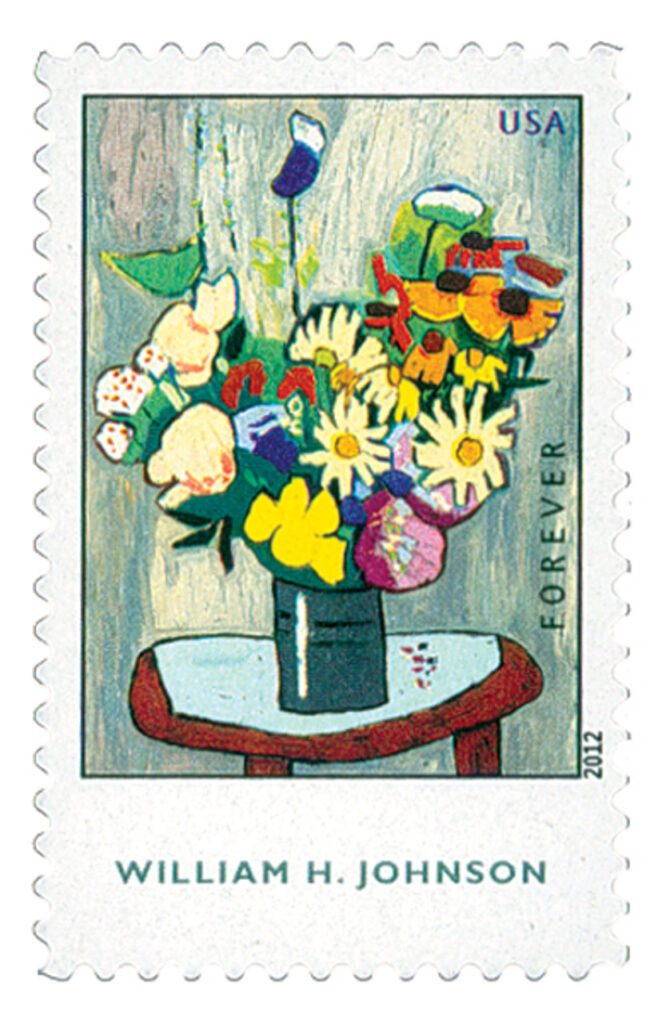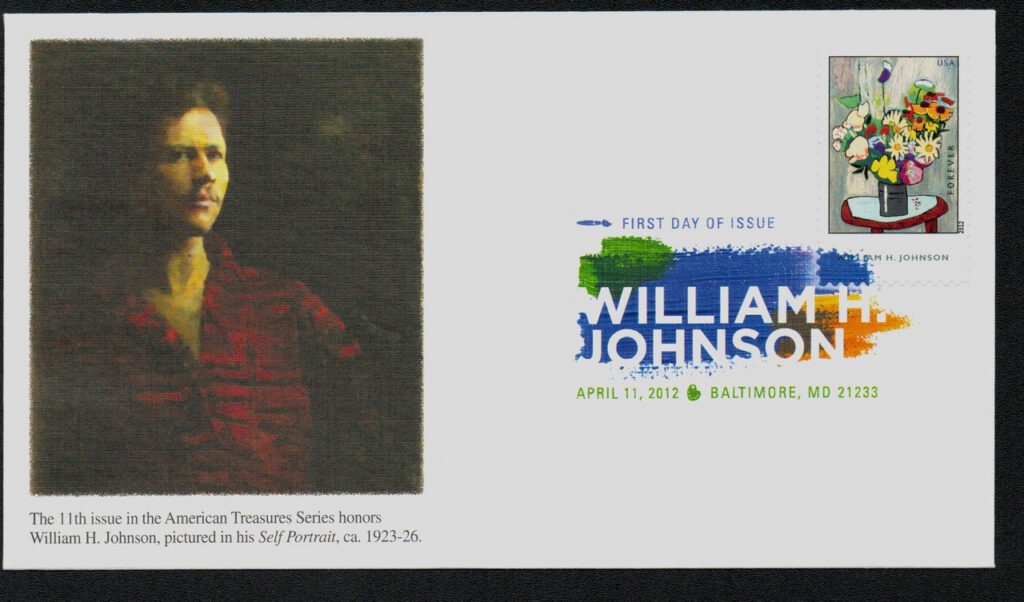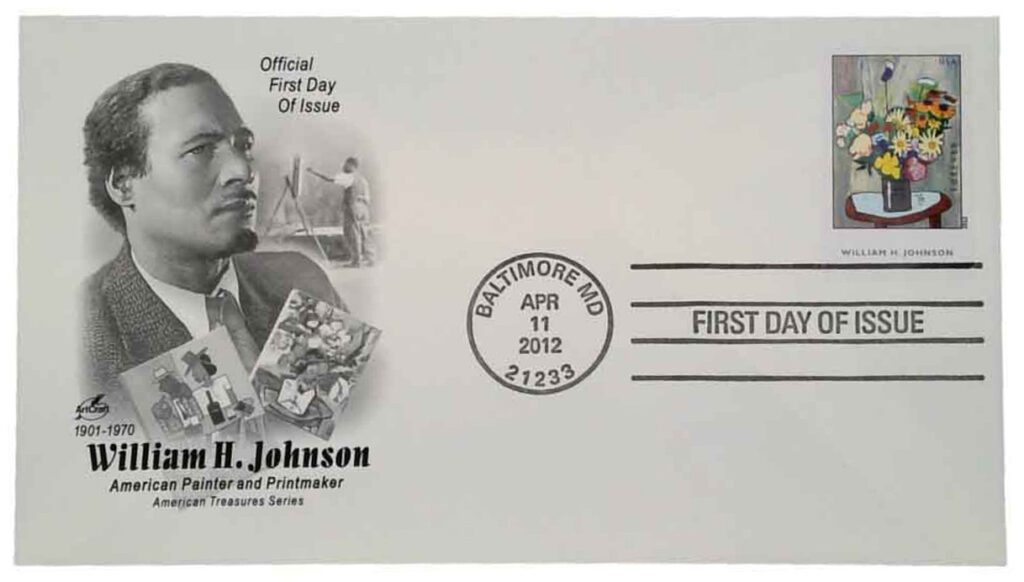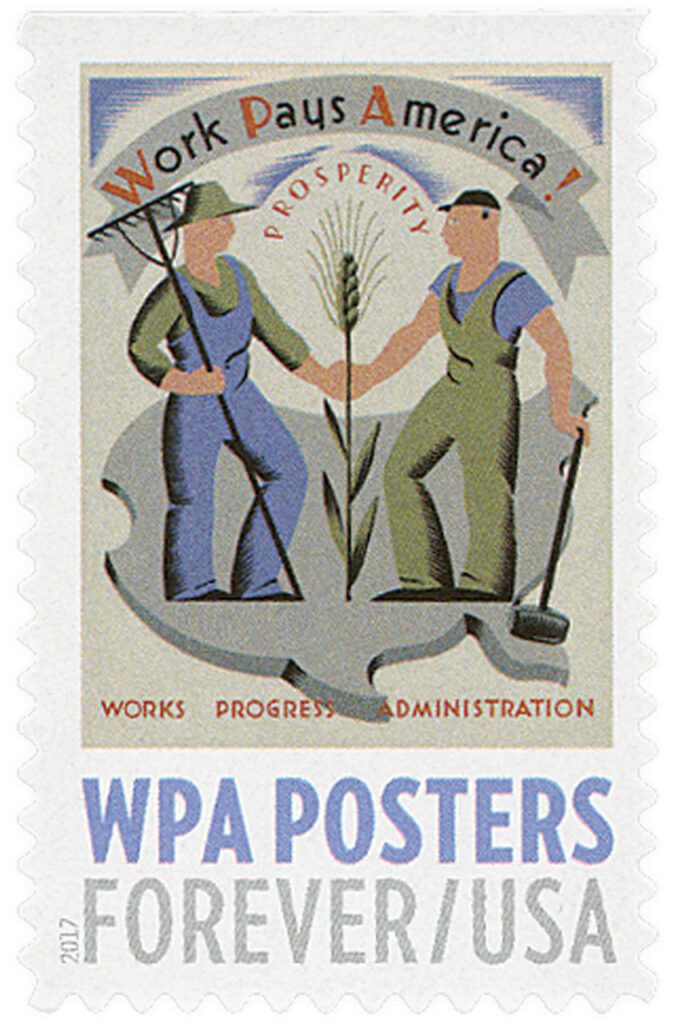
Artist William H. Johnson was born on March 18, 1901, in Florence, South Carolina. He was one of the leading African American artists of the 20th century, best known for his bright folk style paintings.
Johnson attended the first public school in Florence, where he may have first been exposed to art. He quickly gravitated to drawing, copying comic strips from newspapers. For a time, he thought he might work as a newspaper cartoonist. When he was 17, he moved to New York City and worked several odd jobs so he could afford to attend the National Academy of Design. During his summers he also studied under Charles Webster Hawthorne at the Cape Cod School of Art in Massachusetts.
While a student, Johnson received a number of awards from the National Academy of Design. Despite being recognized as one of the most talented artists in his class, he was overlooked for the Pulitzer Travel Scholarship, possibly due to his race. However, his mentor, Hawthorne, believed he deserved the trip, so he raised $1,000 to help Johnson study abroad.
After arriving in Paris, Johnson had his first solo exhibition at the Students and Artists Club in 1927. He then spent some time in Cagnes-sur-Mer and learned about modernism. While in Europe, he met the love of his life, textile artist Holcha Krake. Johnson returned to the US in 1929 and was encouraged to enter his work for the William E. Harmon Foundation Award for Distinguished Achievement Among Negroes in the Fine Arts Field. He won the gold medal and was celebrated as a “real modernist” with “spontaneous, vigorous, firm, direct” work. Johnson also exhibited his work in his hometown twice before returning to Europe in 1930.
Upon his return, Johnson married Holcha Krake and they spent most of the decade in Scandinavia. While there, Johnson became interested in folk art and his work took on a new style. He returned back to American in 1938 and shifted to a “primitive” style, with bright, contrasting colors and two-dimensional figures. When the Great Depression began, he joined the Works Progress Administration’s Federal Art Project and worked as a teacher at the Harlem Community Art Center. During this time, he began to explore African American culture and traditions. He wanted to “paint his own people” and did so in his characteristic folk style.
As Johnson’s work gained attention, his wife died in 1944. He traveled briefly and painted until 1947, when mental illness took hold and he was institutionalized until his death on April 13, 1970.
In 1967, all of Johnson’s 1,300 paintings were donated to the Smithsonian Institution, where they were put on display, reviving interest and establishing him as a leading painter of his time. In 2001, the William H. Johnson Foundation for the Arts was established to mark his 100th birthday and began awarding annual prizes to African American artists. During his term as president, Barack Obama chose four of Johnson’s paintings to decorate the White House – the most by any single artist. His hometown of Florence unveiled a statue in Johnson’s honor in 2020.
View some of Johnson’s artwork.
| FREE printable This Day in History album pages Download a PDF of today’s article. Get a binder or other supplies to create your This Day in History album. |
Discover what else happened on This Day in History.





The “Flowers” stamp has always been a favorite in my collection because of the beautiful colors and depiction of a cheerful bouquet of flowers similar to one I have in my home year around made of quality silk flowers. But until today I never knew the history of the artist or the stamp and now I appreciate this lovely stamp even more. Thank you for the hard work I know it must take to research your great articles about stamps.
I am glad you went to color instead of black and white. I print all of them for my kids who will get my collection when I pass on. Great info. Tha
We lived in Florence a few years. Lovely city. Had no idea it was the home the artist William Johnson. I read here the city now has a stature of him. It seems strange that none of the first day covers were postmarked in Florence.